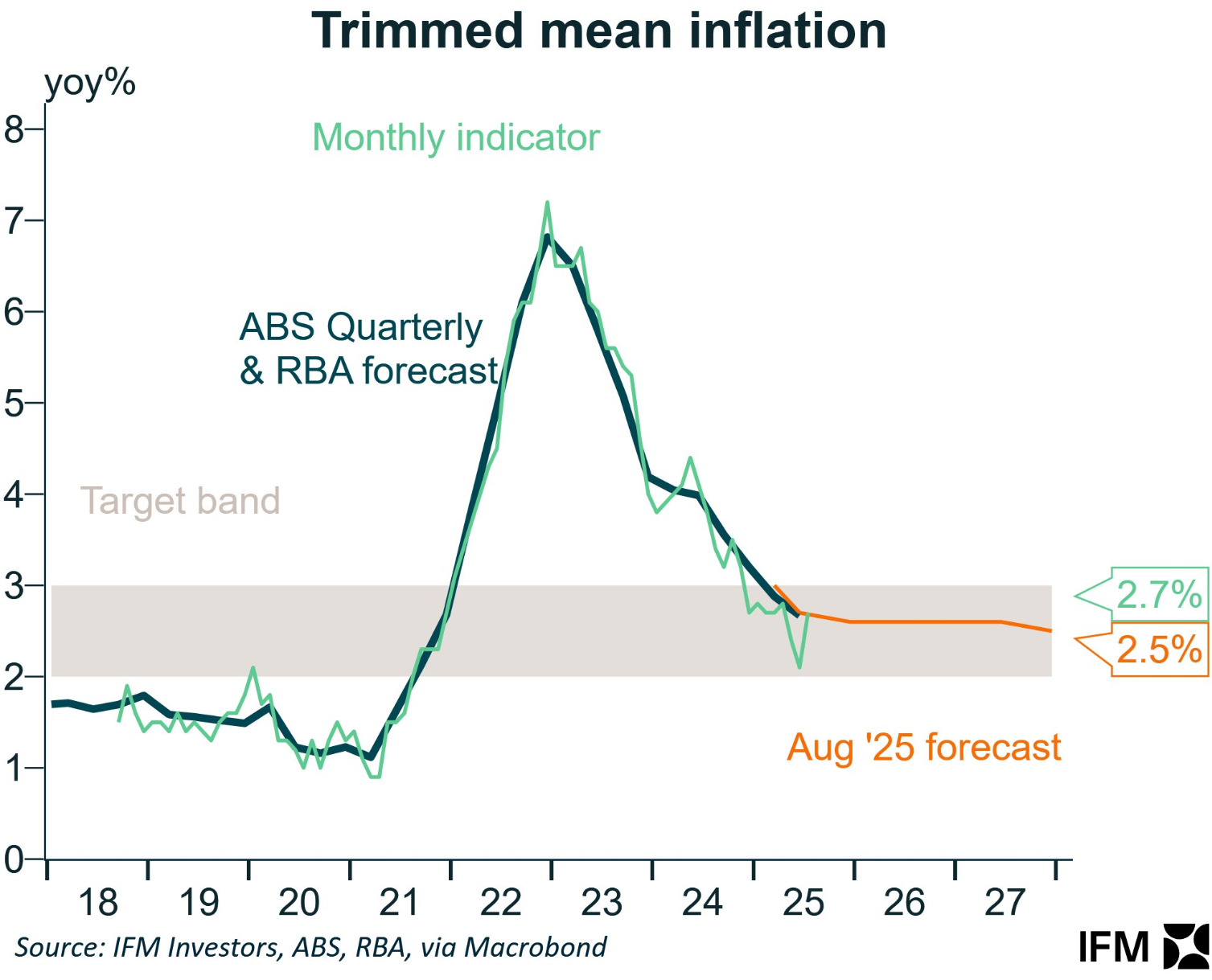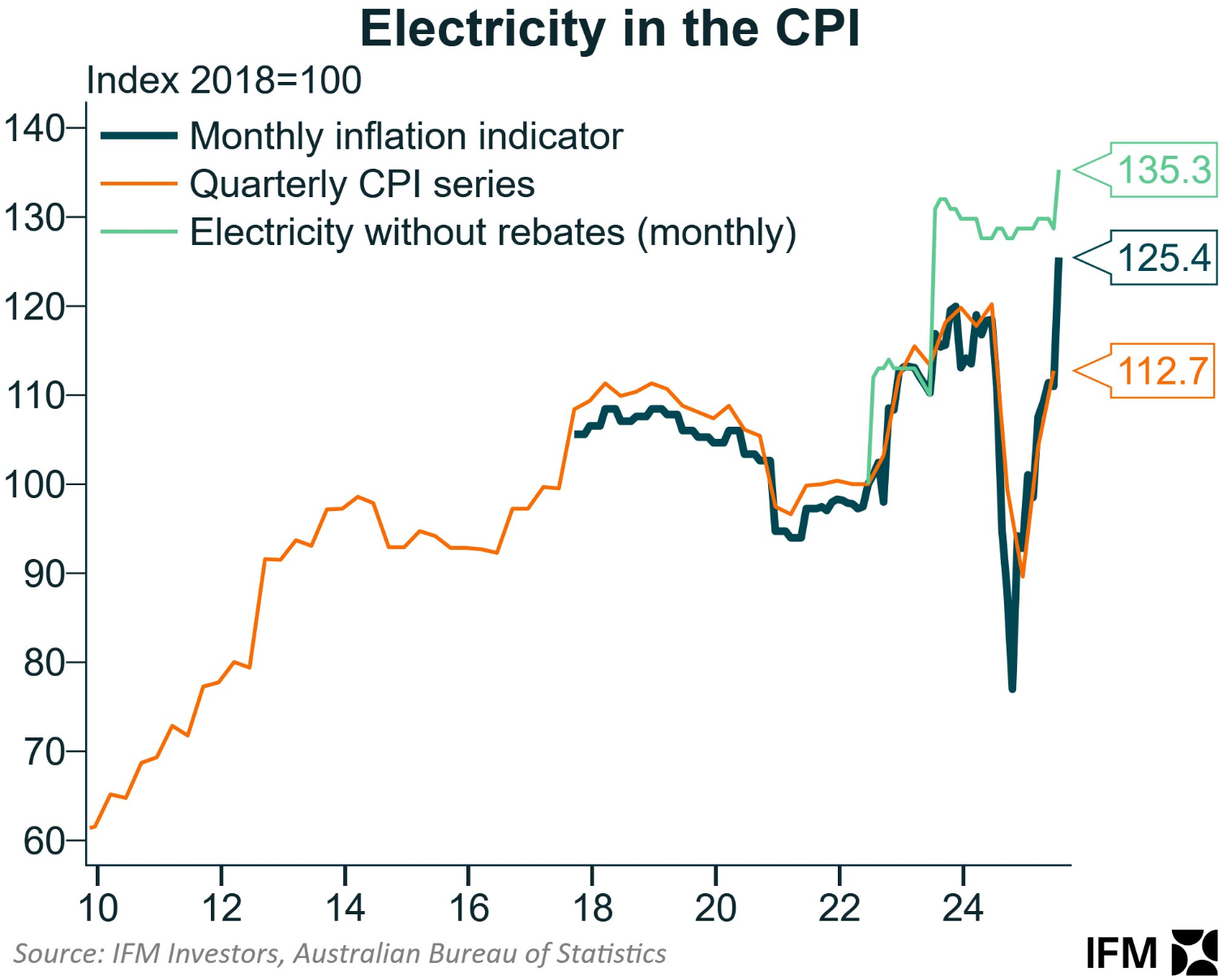On Wednesday, the Australian Bureau of Statistics (ABS) released the monthly CPI inflation indicator for July, which recorded a jump in annual headline inflation to 2.8%, up from up a hefty 0.9% from the 1.9% reported in June.
The result was a much larger rise than anticipated, with CBA forecasting a 2.0% rise and the market consensus and Westpac’s at 2.3%.
The more policy-relevant trimmed mean inflation also rose materially, increasing by 0.6% to 2.7% and more closely aligns with the quarterly measure.

The large rise in inflation was driven by an unexpectedly large 13.0% rise in electricity prices amid the ending of subsidies and the rise in default offers. The following chart from Alex Joiner from IFM Investors illustrates the jump.

Electricity prices rose much more than expected due to the timing of rebates in NSW and the ACT. Travel prices (more than 6% of the CPI basket) were also much stronger than expected. The good news is that CBA believes both should unwind in coming months.
It is important to note that the first month of the quarter is heavily skewed to goods price updates. Therefore, it is not as useful as subsequent months.
The monthly CPI indicator is also very volatile and should be taken with a spoonful of salt.
Nevertheless, Westpac believes that a September rate cut is now off the cards and that the RBA will instead wait for the quarterly CPI print before making its next move.
“Our preliminary review suggests an upside risk to our September quarter CPI estimate of 0.8%qtr (2.7%yr) and our Trimmed Mean estimate of 0.6%qtr (2.4%yr)”, Westpac senior economist Justin Smirk wrote in a note.
“Based on the July data, we now see upside risk to both estimates. We expect the RBA will take a similar view and, as such, is unlikely to cut rates in September”.
“Instead, the Bank will likely wait for the full September quarter CPI results, due in the last week of October”.
CBA economist Harry Ottley expressed similar sentiments.
“The Board is unlikely to be overly concerned about the surprisingly strong print”, Ottley wrote.
“It does however further support the view that the RBA is firmly in a cautious and data-dependant mode. The implied preference for a quarterly cadence of cuts will remain for now making November the next likely 25bp cut to 3.35%”.
Those hoping for another rate cut will likely have to wait until November.

